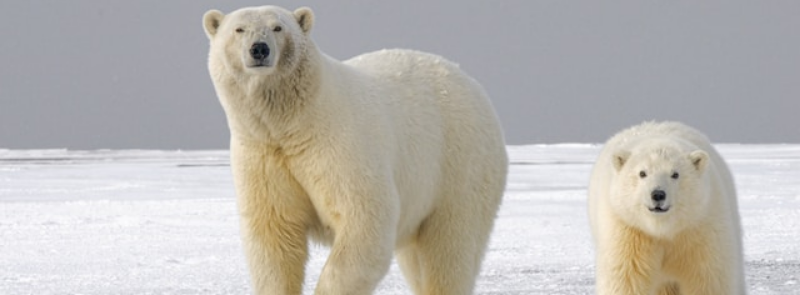
When It Occurs
Every February 27th
Timeline
Days to Come (5)
# Hashtags
#InternationalPolarBearDay #PolarBearConservation
Annually observed on February 27th, International Polar Bear Day was initially established in 2011 by Polar Bears International to shed light on the repercussions of global warming on polar bears and their environments.
The celebration is strategically timed to coincide with the period when polar bear mothers and cubs are in hibernation in their dens. The focus of the day centers on the imperative to safeguard denning families throughout the Arctic. Additionally, the occasion aims to increase awareness of the challenges posed to polar bears by climate change, global warming, and commercial activities. Polar bears, integral to the ecosystem and food chain, face habitat reduction and increased difficulties in thriving due to rising temperatures.
Origin and History
- Initiation: International Polar Bear Day was established by Polar Bears International (PBI), a leading organization dedicated to the conservation of polar bears and their habitat.
- First Observance: The exact year of the first celebration is not well-documented, but it has been observed annually for over a decade.
- Purpose: The primary goal is to highlight the plight of polar bears, educate people about the impact of climate change on their survival, and promote actionable steps to protect these majestic animals and their Arctic habitat.
Significance
- Climate Change Awareness: Polar bears are considered an indicator species for climate change. The day underscores the urgent need to address global warming and its effects on polar ice caps.
- Conservation Efforts: It promotes various conservation initiatives aimed at protecting polar bears and their natural environment.
- Educational Outreach: Schools, zoos, and conservation organizations use this day to educate the public about polar bears, their behavior, habitat, and the threats they face.
Activities and Celebrations
Educational Programs
- School Activities: Many schools incorporate lessons about polar bears into their curriculum, including science projects, presentations, and art contests focused on polar bear conservation.
- Zoo Events: Zoos with polar bears often hold special events, including keeper talks, feeding demonstrations, and interactive exhibits to educate visitors about polar bears and their conservation.
Awareness Campaigns
- Social Media Campaigns: Organizations and individuals share information, photos, and videos using hashtags like #InternationalPolarBearDay and #SaveThePolarBears to spread awareness and encourage action.
- Documentaries and Films: Screenings of documentaries and films about polar bears and the Arctic ecosystem are organized to inform and inspire viewers.
Conservation Initiatives
- Fundraising: Fundraising events and campaigns are held to support polar bear research and conservation projects.
- Advocacy: Advocacy groups use this day to push for stronger environmental policies and regulations to combat climate change and protect polar bear habitats.
Individual Actions
- Energy Conservation: People are encouraged to take actions that reduce their carbon footprint, such as lowering thermostat settings, using energy-efficient appliances, and reducing vehicle use.
- Supporting Conservation Organizations: Donating to or volunteering with organizations dedicated to polar bear conservation.
Challenges Faced by Polar Bears
- Climate Change: The primary threat to polar bears is the loss of sea ice habitat due to rising temperatures. Sea ice is crucial for hunting seals, which are the main food source for polar bears.
- Pollution: Chemical pollutants, including pesticides and heavy metals, accumulate in the Arctic food web and can affect polar bear health.
- Human-Bear Conflicts: As sea ice diminishes, polar bears are forced to spend more time on land, leading to increased encounters with humans, which can result in conflicts and potential harm to both bears and people.
- Overhunting: In some areas, polar bears are still hunted, and while regulations exist, illegal hunting can still pose a threat.
Conservation Efforts
- Research and Monitoring: Scientists and conservationists conduct research to monitor polar bear populations, study their behavior, and understand the impacts of climate change on their habitat.
- Habitat Protection: Efforts are made to protect critical polar bear habitats and establish conservation areas where human activities are limited.
- Public Education: Educational programs aim to raise awareness about polar bears and inspire people to take action to mitigate climate change.
- Policy Advocacy: Advocacy for strong climate policies and international agreements to reduce greenhouse gas emissions and protect polar bear habitats.
Conclusion
International Polar Bear Day is a crucial observance that brings attention to the challenges faced by polar bears and the broader implications of climate change. By educating the public, promoting conservation efforts, and encouraging individual actions, this day plays a vital role in the global effort to protect polar bears and their Arctic home. Whether through supporting conservation organizations, participating in awareness campaigns, or making lifestyle changes to reduce carbon footprints, everyone can contribute to the preservation of these iconic animals and their environment.


